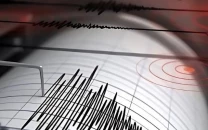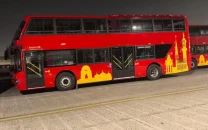Using the PAF?
Air force is an offensive force. Its use, therefore, for a weaker state would mean a drastic escalation.

While it is up to the air force to package some of those details for the understanding of informed generalists, being no expert in such technical and operational details, let me present here some broad points apropos of higher strategy.
As I have written before, a weaker state should avoid a direct response. The air force is an offensive force. Its use, therefore, for a weaker state would mean a much higher climb on the escalation ladder. That is always to the advantage of a stronger adversary who is likely, to put it in Herman Kahn’s words, to enjoy a marked advantage in a given region of the escalation ladder for several reasons, most importantly, sustainability. The ‘jet effect’ of an offensive action is always more difficult to sustain for a weaker state than a stronger one.
Let me translate it. The use of the PAF would mean going on the offensive. The PAF will decide its targeting strategy and, as a senior air force officer I was discussing the issue with said, carry its own air superiority to those targets and destroy them. The PAF can do it to a fairly effective degree but the US can do it even more effectively because of its greater resources and the ability to sustain such a campaign much longer, not just on the military side but by combining it with coercive diplomacy that isolates Pakistan.
Any such decision by Pakistan will also have to keep in mind other hostile states in the region, their responses and the level of threat Pakistan faces from them. In other words, the issue is not just taking on the US Air Force and bearing the consequences of that decision but also determining the space such a decision would give to other hostile states and what advantage they could derive from such confrontation.
Higher strategy is a function of developing responses that suit oneself rather than the other actor(s). The guerrilla wins against a stronger adversary by operating along his own strengths, by his ability to elude the sledgehammer of the stronger force and develop his asymmetrical advantage over a superior force. Why should Pakistan resort to offensive use of air force when it can use other threats more effectively if the push comes to the shove?
States do not have the guerrilla’s advantage. They present an identifiable target. Talking about US military hegemony in a 2003 article titled “Command of the Commons”, Barry R Posen noted that while the US cannot be challenged on sea, in space and in the air, its military advantage is largely blunted in a ‘contested zone’. That’s what we saw in Vietnam, in Iraq and are witnessing now in Afghanistan. In the contested zone, argued Posen, the US can have selective engagement but not enjoy primacy.
Pakistan developed its military strategy against India, not the US. The mainstay of the PAF is the F-16, the latest being the Block 52 fighters. If the threat from the US increases, Pakistan will have to rethink its military strategy, which cannot be done in isolation from its national security strategy, which is the overhang under which the national military strategy must be worked out.
Those who are agitating the issue of the Jacobabad airbase need to understand that the base houses the Block 52 fighters along with US military and non-military personnel, mostly Lockheed contractors, responsible for training PAF personnel in flight and shop line training and, at an advanced level, depot line training. Their presence on the base is part of the F-16 Block 52 deal.
If, in theory, Pakistan were to get into a confrontation with the US, its equipment and armament acquisition for the PAF will have to undergo a drastic change and that is a long-haul process. Therefore, the US and Pakistan, for their own compulsions, share certain risks and have to play the game short of the outcome Thomas Schelling would brand as ‘disaster’.
There are many other complexities that cannot be discussed in an 800-word piece but let it be said that Pakistan has many other options, non-military and, if need be, military, to deal with the US without keeling over the brink or resorting to a direct confrontation which is a function of the use of air force.
Published in The Express Tribune, December 4th, 2011.
















COMMENTS
Comments are moderated and generally will be posted if they are on-topic and not abusive.
For more information, please see our Comments FAQ